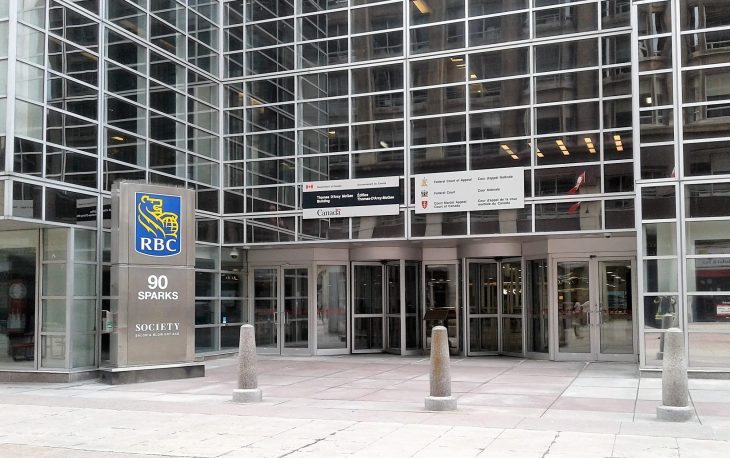
By Ahmad Hathout
The Federal Court of Appeal will hear arguments made by Cogeco and Eastlink that allege the CRTC made several errors when it rejected their request to relook at its decision to allow the three largest telecoms wholesale access to their cable networks.
The July leave application, granted last month, charges that the regulator made three errors of law when it refused to review and vary the August 2024 policy that they say will cripple their businesses.
The applicants argue in a notice of appeal filing, dated September 29, that the CRTC misinterpreted section 2(e) of the federal government’s 2023 policy direction when it allegedly incorrectly considered the internet market separately from the mobile wireless market for the purposes of categorizing the Big 3 – Rogers, Bell and Telus – as “new” competitors. They argue that that section broadly refers to these players as “telecommunications service providers.”
They also point to that same section of the policy direction that requires the CRTC to consider where its decision makes it easier for “new, smaller, or regional” providers to enter into and compete in the market, which they argue it doesn’t in this case.
Along those lines, they also argue that the CRTC gave insufficient reasons or failed to acknowledge or address their arguments related to the claimed “deleterious long-term effects of service bundling, the impact of multi-market contact on competition, and the incoherence of the Policy with the broader regulatory regime.”
Telus, the only Big 3 service provider in favour of the wholesale internet policy, has been outspoken about the need to access the regime to maximize its bundling opportunities, as it grows its internet business in Ontario and Quebec.
The CRTC ruled on June 20 that it wasn’t going to exclude the largest players from accessing the wholesale internet regime outside of their operating territories, which triggered the challenge to the Federal Court of Appeal. The decision was the second time it decided same, after it refused to implement a recommendation from then-Industry Minister Francois-Philippe Champagne to consider banning the Big 3 from the regime.
“The CRTC’s failure to address these submissions is all the more glaring because, as the Appellants argued in the Review and Vary Application, the Decision and the underlying Policy will entrench the dominance of the biggest players in the Canadian telecommunications market and, in so doing, threaten the existence of smaller and regional ISPs and the competitive benefits they bring to the market,” the application argues.
“The Appellants reasoned that this will result in less affordable, innovative, and competitive services and less choice in the market, harming consumers,” it continues. “At the same time, it will reduce wireline network investment by all wholesale service providers, large and small,” which Rogers and Bell agree with.
“The CRTC’s failure to address these submissions is ultimately a failure to justify an untenable result that undermines the 2023 Policy Direction, not to mention the broader objectives of the Act,” the applicants add.
Cogeco and Eastlink are asking the court to set aside the CRTC’s decision, confirm the commission’s policy is legally incompatible with the 2023 policy direction as it relates to Big 3 access to the wholesale regime, and remit the decision to the regulator for a redetermination of the review and vary application “in accordance with the correct legal principles and in a manner that respects basic requirements of procedural fairness.”
The regional telecoms also have an outstanding leave to appeal application – filed about a week before its leave application in this case was granted – that asks the court to review whether cabinet, on the recommendation of the industry minister, erred by giving insufficient reasons to throw out a petition asking it to direct the CRTC to relook at the Big 3 access issue.
“Instead of explaining and justifying its decision to sit on the sidelines, the [Governor in Council (GIC)] had a Minister send out a five-paragraph press release,” says the judicial review application, dated September 2. “In this laconic decision, the GIC fundamentally misapprehended the matter submitted to it; failed to grapple at all – let alone meaningfully – with key submissions; and failed to acknowledge – still less explain and justify – a startling policy U-turn.
“In manifestly failing to live up to the basics of the culture of justification in favour of blind deference toward the CRTC, the GIC effectively abdicated its responsibilities under s. 12(1) of the Telecommunications Act.”
The applicants more specifically allege that the press release, which touched on the price benefits of more competition, does not address the narrow request made in their petition and does not address the “numerous medium- and long-term harms of an overly broad eligibility to use the Policy, for both consumers and small and regional ISPs.
“It failed to acknowledge or explain its own inconsistency with the 2023 Policy Direction and the 2024 Reconsideration order,” the applicants say.
Telus, TekSavvy, Quebecor say SaskTel last-mile fibre application should be dismissed
Back in February, the Federal Court of Appeal gave parties until September 30 to file interventions in a separate but related leave to appeal application by SaskTel, which filed a challenge to the CRTC’s decision to allow competitors to access its last-mile fibre network.
The gist of SaskTel’s argument is that the CRTC allegedly preordained a decision based on what it was told by the federal government, which, through the 2023 cabinet direction, ordered it to adopt a policy of mandated access to the bundled fibre facilities of the telcos. The specific legal argument is that the regulator allegedly relied on section 10 of the 2023 cabinet direction that requires it to adopt that specific policy, which allegedly contradicts section 8 of the Telecommunications Act that requires the regulator to make decisions on broad policy matters.
Telus filed an intervention asking the court to throw out the leave application largely for procedural reasons: that SaskTel, it claims, cannot challenge the legality of the cabinet direction through an appeal from a CRTC decision because that would fly in the face of the doctrine of collateral attack.
“This is not an argument about the legality of the CRTC’s Final Decision – it is an attack on a different decision altogether,” Telus argues in its submission. “Contrary to SaskTel’s suggestion, its complaints about the 2023 Cabinet Direction are not a legal question that can be embedded into an appeal of the Final Decision. SaskTel is attempting to challenge the validity of the GIC’s order without seeking judicial review of it. This cannot be done.”
Beside that, Telus argues that the CRTC itself said its decision stands on its own – a decision made independent of the federal government and regardless of any contested sections of the policy direction.
TekSavvy filed a separate application also asking the court to reject SaskTel’s application. The wholesaler, whose submission is backed by Quebecor, argues that the contested sections of the cabinet direction are consistent with each other.
“The Commission must mandate the provision of an aggregated wholesale high-speed access service — that is additional to any other types of wholesale high-speed access services that are mandated — until it determines that broad, sustainable and meaningful competition will persist even if the provision of an aggregated service is no longer mandated,” section 10 of the cabinet direction reads (underline emphasis added by TekSavvy).
This section, TekSavvy argues, gives the CRTC leeway to determine – in light of its own analysis – whether it should continue to allow for last-mile fibre access, which the regulator determined in the affirmative.
“The latter half of section 10 demonstrates it is not prescriptive or overly specific,” TekSavvy says. “Rather, it gives the CRTC a general direction to determine whether, in light of the state of competition in the internet services industry, any particular aggregated wholesale HSA service should be mandated.”



